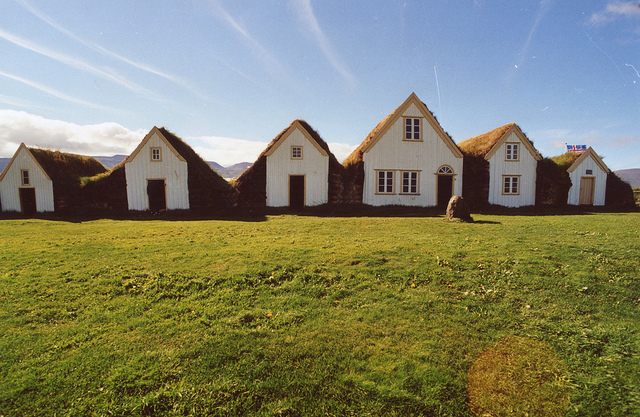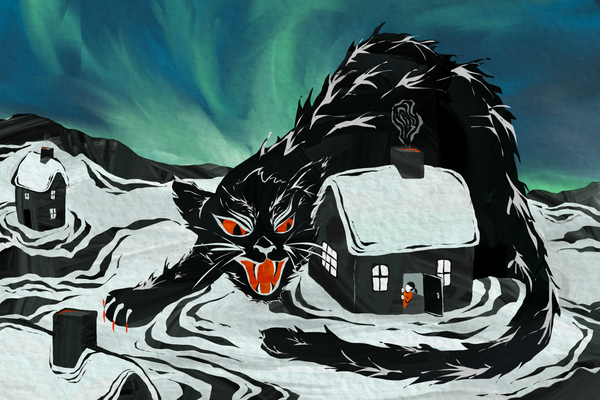Heading to Iceland? Just Make Sure You Don’t Die There
Due to local post-mortem practices, it’d be a bit of an inconvenience.

Inspired by the icy allure of the landscape, the rejuvenating hot springs, the majestic fjords, and the surreal dance of the northern lights, more and more tourists are heading over to Iceland. So many in fact, that it is estimated that in 2016, there were more American tourists who visited the country than there are people living in it.
But what makes Iceland so alluring can also make it dangerous. Looking for unique adventure opportunities, many tourists have fallen prey to the country’s unpredictable nature and met a tragic death.

Of course, dying while abroad is probably every traveler’s biggest fear, no matter the destination. It turns out, however, that there are places you really don’t want to die in. And Iceland is one of them. Why the discrimination against the beautiful island? Its funeral practices can sometimes make the difficult process of transporting a body even more complicated.
Traditional Viking funerals consisted of cremating the deceased in a funeral pyre. As of 1,000 AD, when the country officially converted to Christianity, burials became more and more common.
Today, funeral and burial practices usually follow the traditions of the National Church of Iceland, the country’s predominant denomination. These traditions include the kistulagninar, a small wake attended only by the closest family members and friends; the burial of the body or, if cremated, of the urn where ashes are contained; and, the posting of an obituary in a newspaper. There is also the tradition of not embalming the body—a practice that has proven to be quite inconvenient for foreign families that face the tragedy of losing a loved one in Iceland.

The Disposition of Remains Report: Iceland provided by the United States Embassy warns American nationals that “embalming is not performed in Iceland so decisions about disposition of remains must be made quickly.” The maximum period before burial is eight days, so family members have a week to make all the arrangements pertaining to the treatment and shipping of the body and fill out all the necessary paperwork, often from abroad. Under special circumstances, like the need for an autopsy, this period can be delayed, but getting permission may prove difficult and requires even more paperwork.
In countries like the United States, Canada, and New Zealand, embalming is used in almost all burials, usually to preserve the body long enough for wakes and visits. According to Magnus Magnusson of Útfararstrofa Kirkjugardanna, a funeral home in Reykjavik, embalming is almost never done in Iceland— it is simply not necessary.
“We don’t have a hot climate here and we don’t have much humidity,” he says. “When someone dies, it’s usually not long before they are in the morgue and in the cooler, so there’s just no need for embalming.”

It’s also just not the way things are done in Iceland, which is a country in which traditions hold firm. In Burial Practice in Contemporary Iceland: Tradition and Conflict, Silke Schurack argues that the “tendency to hold on to traditions for the sake of these traditions […] may play some role in the cause for the lack of alternative burial options.” She explains that funeral procedures in Iceland are very strict, and often include requirements that are unnecessary, and even impractical. For example, family members are required by law to buy a casket for cremation. These caskets are usually very expensive and simply burned along with the body. Urns are required to be buried and those wishing to bury the urn in their backyards or to scatter the ashes may do so only with special permission.

There seems to be little reason for these strict rules other than the fact that it is tradition. As Schurack claims, Iceland’s mostly homogenous population and its long history of fighting for independence have created a culture in which keeping traditions alive is of utmost importance, “especially in matters touching such ‘traditional’ issues as burial culture.”
This doesn’t mean, however, that Icelandic people are completely unwilling to perform embalming, it’s more about knowing who to speak to. Magnusson says that if a foreigner or even a national wishes to be embalmed, it is definitely possible to do so. It’s just that, unlike in countries where embalming is common, the hospital and not the funeral homes perform the procedure. This is why foreigners who are used to handling the procedure with morticians can sometimes be left confused and in despair.

So what can foreigners do if tragedy befalls a relative while they’re in Iceland? Act quickly, talk to the hospital about embalming the body, and contact a funeral home as soon as possible. As a U.S. Embassy spokesperson stated, morticians are really the best people to talk to for any questions and concerns that don’t pertain particularly to the law.
Update, 12/19: The story originally stated that embalming was common in most western countries. It has been updated for accuracy, as many European countries do not practice it. We regret the error.









Follow us on Twitter to get the latest on the world's hidden wonders.
Like us on Facebook to get the latest on the world's hidden wonders.
Follow us on Twitter Like us on Facebook